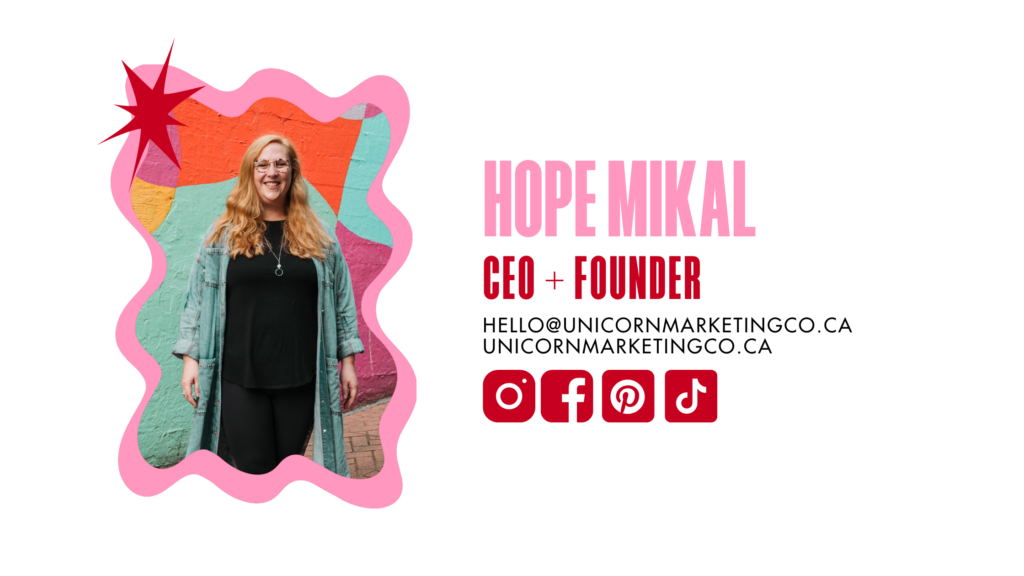Canada Mourns As Remains of 215 Children Found At Indigenous School
With the recent heart-breaking announcement of 215 bodies of First Nations children found buried in a former Residential School in British Columbia, Canada, social media news feeds and headlines all over the world have become hyper-focused on this tragedy.
Hearing this news has left me wide-eyed, heartbroken, and grieving. Unfortunately, this headline does not come to me as a shock, as I am open to understanding, learning, and listening to the past and present struggles of Aboriginal peoples as a socially conscious community member. As a Caucasian female, I identify as a ‘settler’ due to my family’s heritage of immigrating from France and Lithuania early on in the 20th century. I recognize that I am writing this article with a connotation of privilege. If you’ll allow me to continue, I’d like to share my perspective on how each and every one of us can educate ourselves when a media storm such as this one arises, and how to better our relationships with history, current societal and cultural issues, and develop a well-rounded, navigable understanding.
Among many other hats, I am a marketing and branding professional, likely similar to yourself. I have paused and been reflecting with much heart this past week on the best way to socially manage my own creative agency’s impact upon hearing this news. To provide some context on my own background, I have worked in creative industries for over a decade. I am grateful for many incredible experiences where my career allowed me to participate as a guest in ceremonies, traditions, museum exhibit openings, and monumental political gatherings with the Tk’emlups te Secwepemc and T’exelc peoples in the interior region of British Columbia, Canada, also known as Turtle Island in some versions of Indigenous oral histories.
Looking into Canada’s Systemic Racism and Genocide
There is a much darker reality that has been left out of the Canadian educational system’s required curriculum, and often in the mainstream media – until recently. “Residential schools were government-sponsored religious schools that were established to assimilate Indigenous children into Euro-Canadian culture. Residential schools were created by Christian churches and the Canadian government as an attempt to both educate and convert Indigenous youth and to assimilate them into Canadian society. [These schools] disrupted lives and communities, causing long-term problems for Indigenous peoples” (The Canadian Encyclopedia, 2021). To provide context of a timeline in recent events, the last residential school closed in 1996.
While residential schools are thankfully no longer open, the long-lasting effects of intergenerational trauma will take at least seven generations to fully heal. The tragic loss of family structures, identity, language, cultural practices, and entire knowledge systems has been detrimental to past, current, and future Aboriginal peoples. An unimaginable loss. This can feel really hard to fathom and to fully understand.
To provide a personal context, I’d like to share an experience where I was invited alongside a film production team to witness, interview, and capture the learnings of university students’ regarding the history and context of residential schools. In fact, the school was the very same one you have seen highlighted in mainstream media. The city of Kamloops, ne Tk’emlups te Secwepemc, was my home for a time. Without going into too much of the details, as to clarify, this is not my story to tell, I invite you to imagine an empty room with dark corners in the high edges of the ceilings. Floorboards creak and moan as a circle is formed with crossed legs and open minds around an Aboriginal Elder seated on a chair. The air hangs heavy and dust flecks dance in the sunlight, as the Elder opens his heart, and begins to share gut-wrenching, specific truths of his time spent within the very same surrounding four walls. Tears cling to the corners of his eyes, as he shares how he remembers what it felt like to be free playing in the desert grassed covered mountains outside the dust-covered windows before coming to this place. The atrocities and horrors of genocide he experienced are not my story to share here.
Bringing us forward into recent years, this resilient man shared how this significant part of his childhood haunts him to this day, how he struggled to cope as a young adult, as a parent and continues to discover challenges as a grandparent, mentally, spiritually, psychically, with his sense of self, and his community. Holding a camera capturing an angle from a nearby windowsill, I release a sigh of relief for the steadicam securing the shot as my fingers tremble uncontrollably.
The Time Is Now For Truth And Reconciliation
I encourage you to look inwards, to educate yourself and others around you about the historical and current atrocities committed against Aboriginal peoples, and to hold strength against systemic racism that is embedded throughout our modern society. This is not just a problem that exists solely within the borders of Canada.
“In 2015, the Truth and Reconciliation Commission (TRC) — which was set up in 2008 to document the effects of residential schools on Indigenous peoples — defined reconciliation as the process of “establishing and maintaining a mutually respectful relationship between Aboriginal and non-Aboriginal peoples in this country.” The Truth and Reconciliation Commission went on to say that in order for reconciliation to happen in Canada, “there has to be awareness of the past, an acknowledgement of the harm that has been inflicted, atonement for the causes, and action to change behaviour” (The Canadian Encyclopedia, 2021).”
A final Report of the Truth and Reconciliation Commission of Canada contains 94 calls to action; including calls to abandon the Doctrine of Discovery and fully adopt and implement the United Nations’ Declaration on the Rights of Indigenous Peoples. The Summary of the Final Report of the Truth and Reconciliation Commission of Canada states, “getting to the truth was hard, but getting to reconciliation will be harder. It requires that the paternalistic and racist foundations of the residential school system be rejected as the basis for an ongoing relationship. Reconciliation requires that a new vision, based on a commitment to mutual respect, be developed. It also requires an understanding that the most harmful impacts of residential schools have been the loss of pride and self-respect of Aboriginal people and the lack of respect that non-Aboriginal people have been raised to have for their Aboriginal neighbours. Reconciliation is not an Aboriginal problem; it is a Canadian one” (2015).
What Can We Do With This Information As Social Media Managers?
I urge you not to remain silent and defeated after reading this blog post. Instead, I invite you to reflect on how you can invite truth and reconciliation into your own life, your business, and your community. Here are four tips to keep in your back pocket when practicing to be a socially responsible caretaker of your corner of the internet.
Social Listening with an Impact
As social media managers, we often catch ourselves scrolling through Instagram and other platforms on a daily basis, for fun or for the benefit of our clients. You are likely familiar with the term social listening, which “is the process of monitoring social media channels for mentions of your brand, competitors, product, and more”, as defined by Hootsuite. In times like these, it is important to stop the constant push of strategic content, and look around. One of the most powerful actions you can do as a social media manager is to leave space for others to share their stories. Imagine the power of good and healing that can occur if we all simply stopped and just listened. Visualize that you are sitting in a room with the Elder I’ve shared from my own story, and allow for the power of storytelling to educate, empower, and heal.
Backup Your Data With Facts
There is a chance that your post about a socially conscious topic may be the first one that someone in your audience takes in. It could also be that this may be the only piece of content or information that this person reads or absorbs about this. Practice your due diligence with important information like this and please share your sources. Whether you post your links in the caption, with a swipe up link, or optimize the link in your profile’s bio for a short time to share additional sources, figures, and your fully prepared research. Allow for the opportunity for your community to learn more about this topic and for your business to become a vessel of knowledge sharing. As a suggestion, you could invite an expert on the topic to join an Instagram live, or to write a guest blog post on your website.
Don’t Jump on the Bandwagon
Catch yourself before you fall into a mass-washing phenomena of supporting a cause. There is no need to jump on a bandwagon of socially conscious information, simply because your competitor did so. You’ve heard of greenwashing when it comes to environmental and sustainable marketing, and pride washing. Simply take a look around at which brands have suddenly become part of the rainbow flag space this month. Keep an open mind and allow yourself to think critically about the potential benefits and hindrances. With all of this in mind, be authentic to your brand’s voice. Share a cause that is really important to you in a way that both benefits this cause and exemplifies your business’s why.
Donate, Donate, Donate
Put your money where your mouth is! If you are able to – of course, don’t stretch your pockets if this is beyond your means – provide financial support to a cause will make a long-lasting impact. Share resources, links, and the mission behind non-profits in your local community and region. Set up a go-fund me page, or look at creating an experience that your community can contribute to and donating the proceeds to a non-profit of your choice. Encourage your community to donate if possible, and share the benefits of where these funds are being used. Make an impact where it counts, in your own neighbourhood.
Be Responsible
To make short of a topic that is near to my heart, please – pretty please – be a responsible social media manager. Focus on the messaging and the why behind your social media business rather than stretching thin over every cause and holiday that arises. Take time to stop pushing out content and allow your grid to breathe, let others share their important truths. When sharing information, try to be as accurate as possible and always share your sources. Wherever possible, encourage your team members, your target audience, and your online community to both research and make their own informed knowledge sharing on a cause, and create a space to donate to the proper channels, organizations, and resources that can amplify your fundraising efforts with big change.
Thank you for taking the time to learn more about the current news unraveling in Tk’emlups te Secwepemc of British Columbia, Canada. This breaking news headline will likely be the beginning of many more headlines to follow, as more funding will be directed to research the recent acts of residential schools and implement the 94 calls to action proposed in 2015. The month of June is a time for Canadians to celebrate National Indigenous History Month to honor the history, heritage, and diversity of Indigenous peoples in Canada. It is also an opportunity to recognize the strength of present-day Indigenous communities.
Today is a new day. Let it be one with a beginning of creating a space for healing, learning, and change.
Donations are welcomed to the following organizations:
- Indian Residential Schools Survivor Society
- Reconciliation Canada
- BC Elders Communication Center Society
- Surrounded by Cedar Child and Family Services
- Urban Native Youth Association
References
- BBC (2021). Canada mourns as 215 remains found at residential school.
- Hootsuite (2021). What is social listening?
- The Canadian Encyclopedia (2021). Residential schools in Canada.
- Truth and Reconciliation Act (2021). Honouring the truth. Reconciling for the future. July 23, 2015.
- Truth and Reconciliation (2021). What is the truth and reconciliation commission


